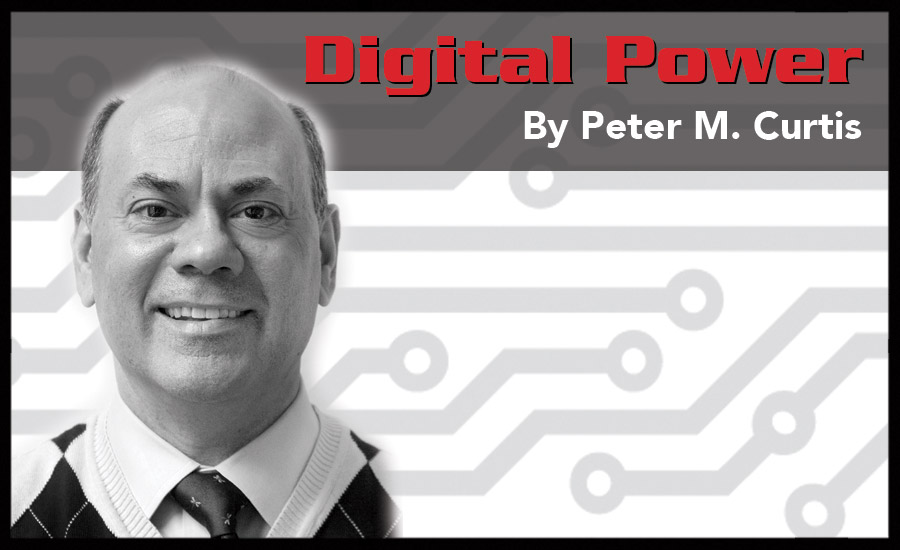Today, more than three-fourths of the world’s population is connected some how and is exponentially increasing its processing power; we are literally moving electrons all around the universe into some data center executing our every command. These data centers and other critical infrastructures are the new mission control for our digital society. The infrastructure to support it is complex and challenging and requires diverse sets of interdisciplinary skills and solutions to operate safely and reliably. In other words, there is every reason that today’s best and brightest talent would find a career in the mission critical engineering industry fulfilling.
Look at the network connectivity/applications/mobile devices that we use to live today. In this present day, there are more internet-connected devices than people on Earth; the world of only 30 years ago is not recognizable, at least to me. Furthermore, think about the energy and infrastructure needed just to send an email from a smart phone. Data must be sent from the phone to a cell tower, be processed at the email provider’s data center, sent to the recipient’s email provider’s data center, processed there, and then retrieved by the recipient through an internet provider’s distribution network to a computer or mobile device. Designing that system and making sure that it is available 24 hours a day, every day, is a monumental task, and one that the bright minds of the next generation engineer or Nintendo Generation should be eager to tackle.
Taking this thought a step further, we have entered into the “Always On” world without having enough of the skilled professionals and technicians to operate the systems that keep everything and anything on 24/7. If you look at work today’s mission critical engineers do, it’s obvious that the mission critical profession really is mission control for the life we live today.
Looking closer at the people keeping these systems online reveals that at least half will be retiring in the next 7 to 10 years. That doesn’t really leave much time to assemble a succession plan.
I believe we are at a critical point now. At the rapid pace at which our mission critical industry is evolving we need to have a proper career progression, education, training, certification, and ongoing recertification so we can effectively manage and maintain today’s mission critical infrastructure. Furthermore, we need to attract and expose budding engineers to the challenges inherent in the field so they will be eager and excited to be involved with design, management, and operation of both legacy and cutting-edge critical environments. That excitement can come from internship programs; however it’s important that job responsibilities are clearly defined so milestones and progress can be measured.
Today we need to have a sense of urgency with regard to professionals and technicians who operate and maintain our critical systems. Think about all the training astronauts, pilots, and captains receive before they are permitted to touch a vessel and how many tools they have available to them both while they are learning and while operating their vessels. We, as an industry, are spending billions to build critical infrastructures and now need the tools and personnel to operate, manage, and maintain facilities and equipment throughout the full lifecycle.
I have dedicated a significant part of my life to developing mission critical training material for the Nintendo Generation, the
young engineers entering into this field, offering educational programs and seminars, and also have been affiliated with and developing programs for New York Institute of Technology, Marist College, Data Center Dynamics, Association of Facilities Engineers, Mission Critical, and many others. My goal is to create the best in breed mission critical education and training program for the industry and provide resources as well as lay out a structured career progression model for the mission critical industry. There are other programs and white papers available from companies and organizations such as ASHRAE, IEEE, Emerson, MGE/Schneider Electric, and Eaton/Powerware that offer a wealth of knowledge about the industry.
With the Nintendo Generation becoming users rather than builders, there is a sense of urgency to preparing for a seamless transition to taking control of our complex infrastructure. The challenge is how do we, as an industry, inspire the Nintendo Generation to become mission critical engineers just as NASA inspired the engineers of my era? The answer lies within the data center itself, as it is also the realm of the video game, home to countless online game servers, the very same servers that those of the Nintendo Generation log into every single day.
We need to continue to enhance the tools to make this industry safe, resilient, and efficient so we can position the future generations to be successful. As an industry we also need to keep developing our training programs so that the new generation can continue to build resilient and reliable infrastructures that will support whatever the future of technology brings. The same way NASA inspired me to enter the field of mission critical engineering, we can use the “Always On” data center powered world to inspire today’s engineers of the Nintendo Generation.
|
Long Distance Telecommunications
|
Water Filters
|
|
Adjustable Smoke Detectors
|
Infrared Thermometers
|
|
Oil Cleaning Bacteria
|
Reprints of this article are available by contacting Jill DeVries at devriesj @bnpmedia.com or at 248-244-1726.







